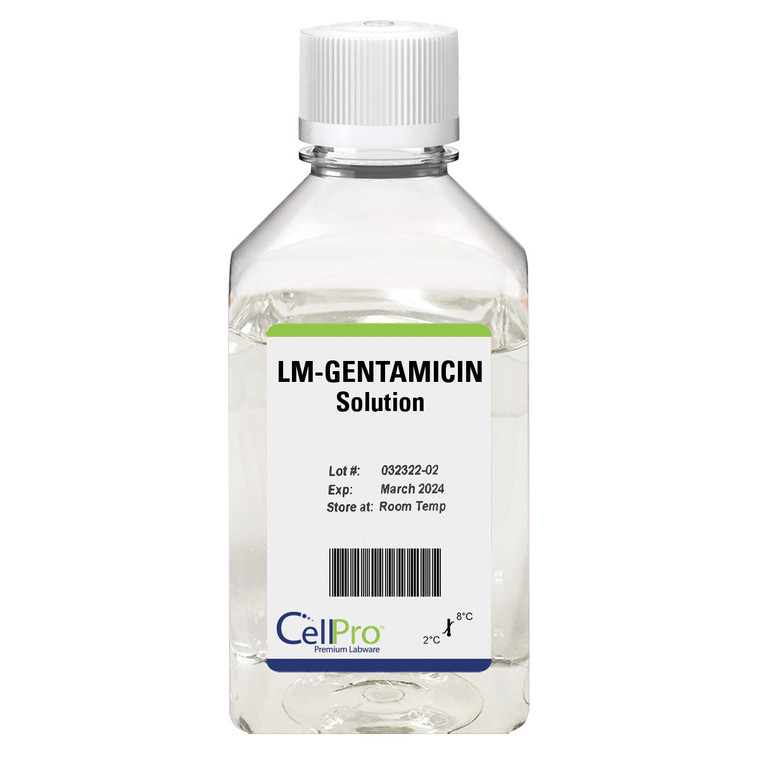Description
Gentamicin: A Powerful Antibiotic in the Fight Against Bacterial Infections
Gentamicin is a potent antibiotic belonging to the aminoglycoside class, widely used to treat a variety of serious bacterial infections. Its effectiveness against particularly stubborn gram-negative bacteria has made it a cornerstone in many treatment regimens. However, like all powerful medications, gentamicin comes with important considerations regarding its use and potential side effects.
How Gentamicin Works:
Gentamicin functions by inhibiting bacterial protein synthesis. It binds to the 30S ribosomal subunit of the bacterial cell, interfering with the translation of bacterial mRNA. This disruption effectively halts the production of essential proteins, leading to bacterial growth inhibition (bacteriostatic effect) or even bacterial death (bactericidal effect) depending on the concentration and the type of bacteria involved.
What Infections Does Gentamicin Treat?
Gentamicin is typically reserved for serious infections caused by susceptible bacteria when other, less toxic antibiotics are not effective or appropriate. It is often used to treat:
- Severe Gram-Negative Infections: Including pneumonia, bloodstream infections (sepsis), urinary tract infections, and intra-abdominal infections caused by bacteria like Pseudomonas aeruginosa, E. coli, and Klebsiella pneumoniae.
- Bone and Joint Infections (Osteomyelitis): Infections of the bone are notoriously difficult to treat, and gentamicin can be an effective component of the therapy.
- Skin and Soft Tissue Infections: Especially those caused by bacteria resistant to other antibiotics.
- Endocarditis: Inflammation of the inner lining of the heart, particularly when caused by susceptible bacteria.
- Pelvic Inflammatory Disease (PID): Severe cases may require intravenous gentamicin administration.
Administration and Dosage:
Gentamicin is typically administered intravenously (IV) or intramuscularly (IM) in a hospital setting. The dosage is carefully calculated based on factors such as the patient’s weight, kidney function, and the severity of the infection. Oral gentamicin is poorly absorbed and therefore not typically used for systemic infections. Topical formulations are available for treating certain skin infections.
Important Considerations and Potential Side Effects:
While highly effective, gentamicin carries a significant risk of adverse effects, necessitating careful monitoring during treatment. The two most concerning side effects are:
- Nephrotoxicity (Kidney Damage): Gentamicin can damage the kidneys, leading to decreased kidney function. Risk factors for nephrotoxicity include pre-existing kidney disease, dehydration, and prolonged or high-dose treatment. Regular monitoring of kidney function is crucial.
- Ototoxicity (Hearing Loss and Balance Problems): Gentamicin can damage the inner ear, leading to hearing loss, tinnitus (ringing in the ears), and balance problems (vertigo). The risk of ototoxicity is increased with high doses, prolonged treatment, and pre-existing hearing loss.
Other potential side effects of gentamicin include:
- Allergic Reactions: Rash, itching, hives, or, in rare cases, anaphylaxis (a severe allergic reaction).
- Neuromuscular Blockade: Gentamicin can interfere with nerve and muscle function, potentially causing muscle weakness or paralysis, especially in patients with neuromuscular disorders or those taking certain muscle relaxants.
Monitoring and Precautions:
Due to the potential for kidney damage and hearing loss, careful monitoring is essential during gentamicin therapy. This typically includes:
- Regular Blood Tests: To monitor kidney function (creatinine and BUN levels) and gentamicin levels in the blood. This ensures the drug is within the therapeutic range, maximizing effectiveness while minimizing toxicity.
- Hearing Tests (Audiometry): To detect early signs of ototoxicity.
- Assessing Fluid Balance: Maintaining proper hydration helps protect the kidneys.
Contraindications:
Gentamicin is contraindicated (should not be used) in patients with:
- Known allergy to aminoglycosides.
- Pre-existing significant kidney or hearing impairment.
- Pregnancy: Gentamicin can cross the placenta and potentially harm the developing fetus.
Conclusion:
Gentamicin is a powerful and valuable antibiotic for treating serious bacterial infections. However, its potential for significant side effects necessitates careful monitoring and judicious use. Close collaboration between healthcare providers and patients is crucial to ensure the benefits of gentamicin outweigh the risks and to optimize treatment outcomes. As with all antibiotics, responsible prescribing practices are vital to prevent the development of antibiotic resistance and maintain the effectiveness of this important medication in the future. Always consult your healthcare provider for any health concerns or before starting any new medication.
















Reviews
There are no reviews yet.